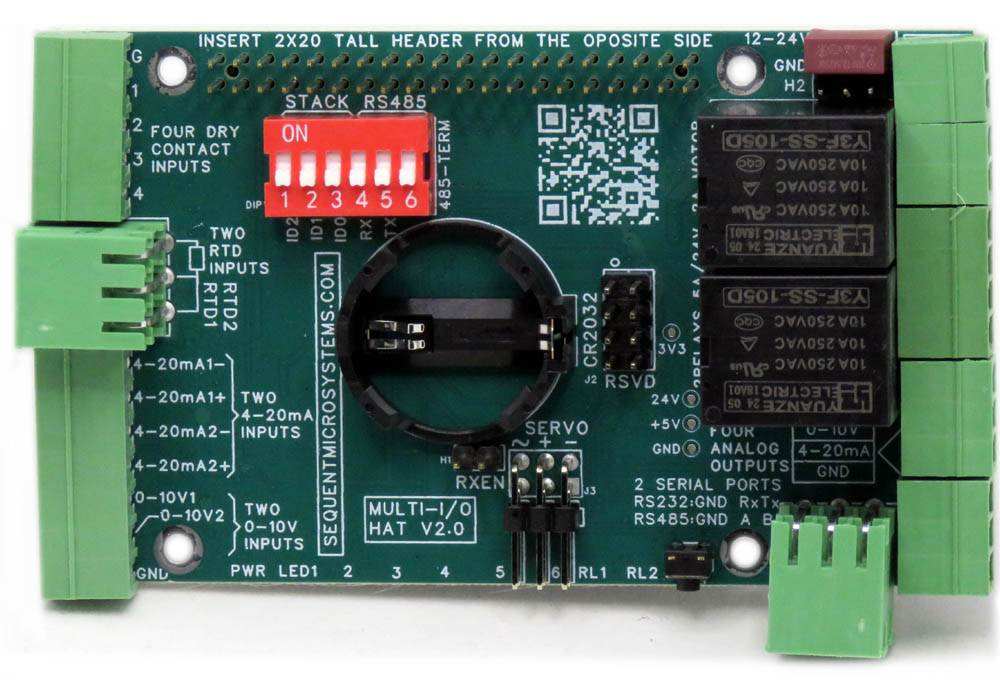
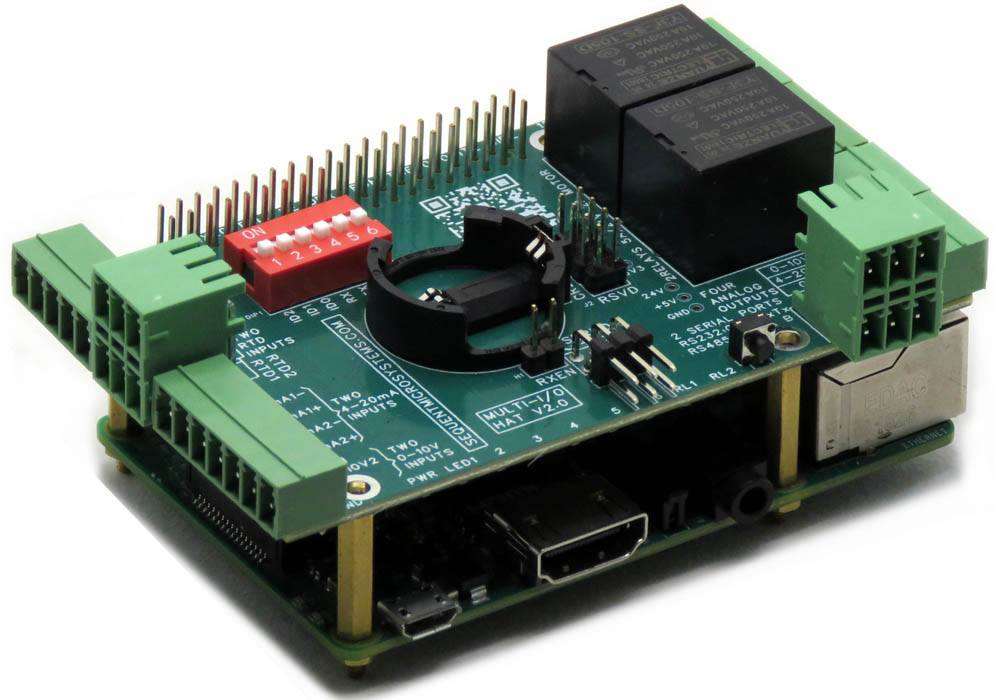
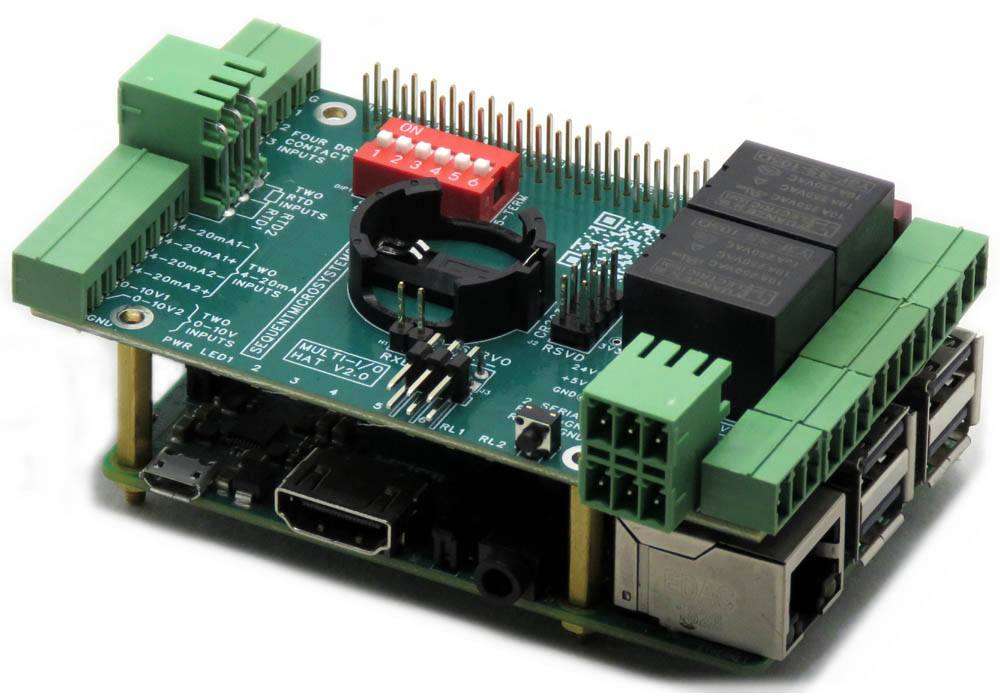
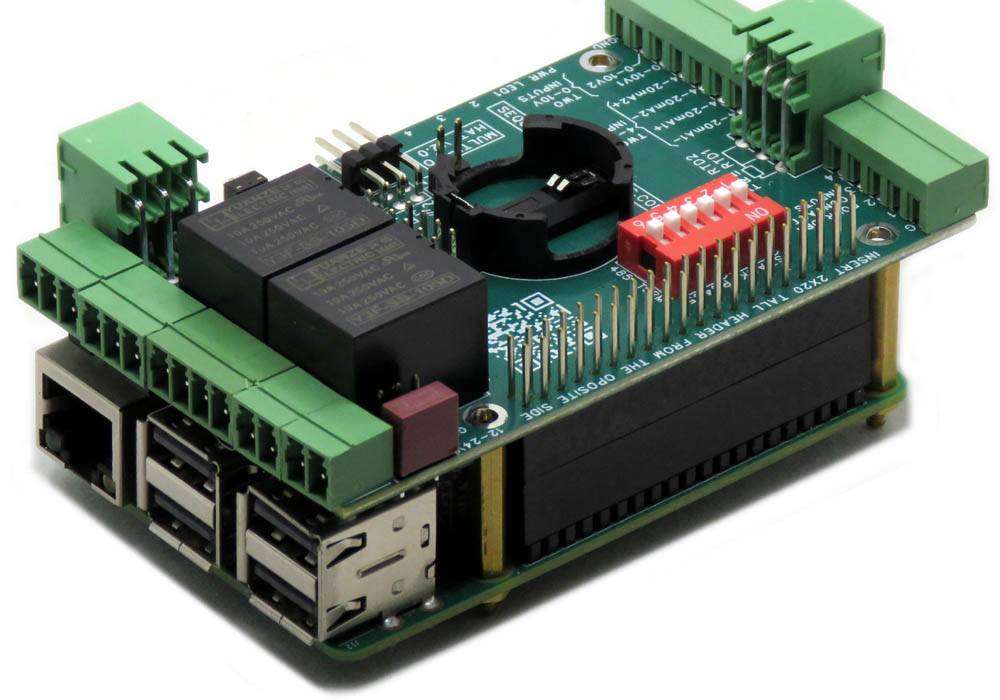
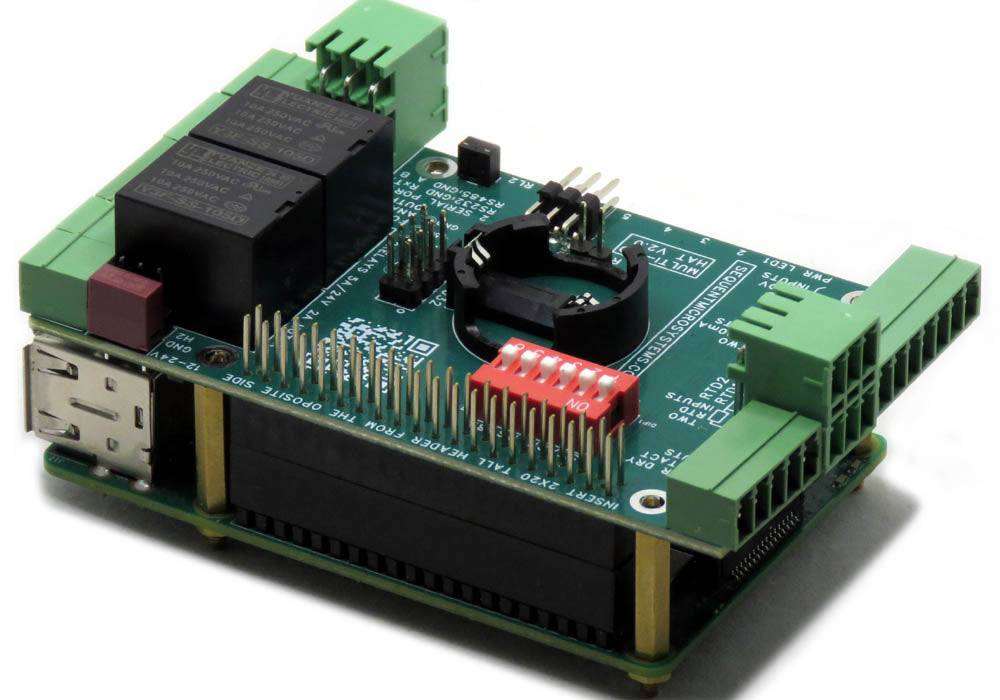

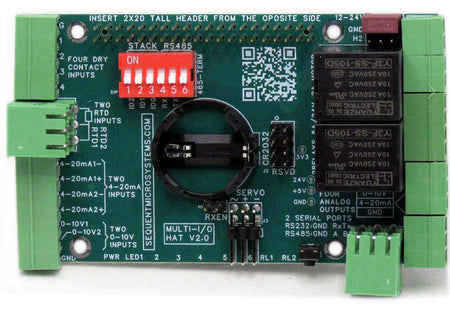
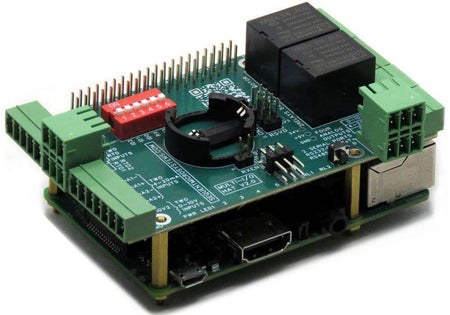
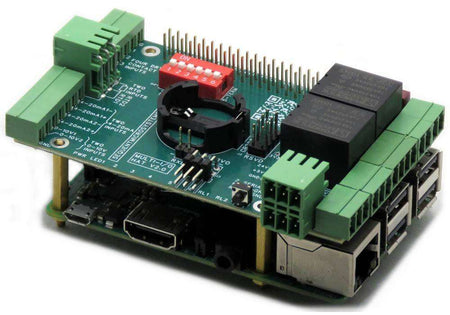
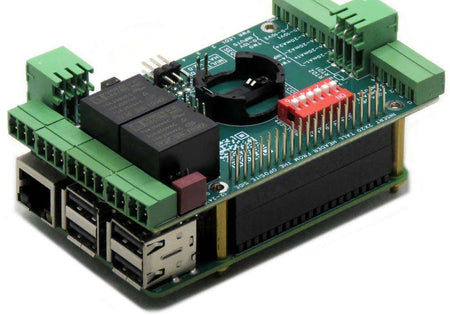
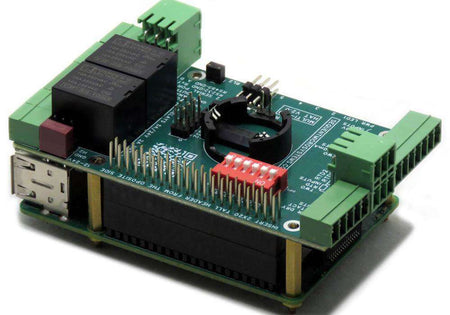
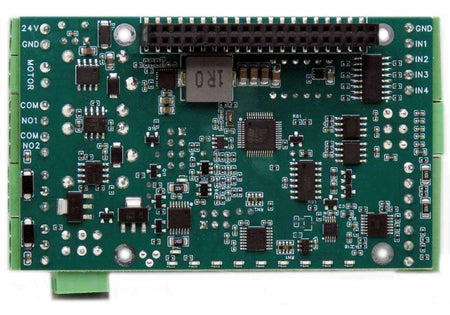
Multi-IO HAT 8-Layer Stackable for Raspberry Pi
Four digital Inputs, 2xRTD ports, 2x0-10V Inp and Out, 2x4-20mA In and Out, 2x5A/24V Relays, 2xServo ports, H-Bridge Motor, RS485, RS232, Watchdog.
FEATURES
- Uses only I2C port, works with all Raspberry Pi versions from Zero to 5
- Wide range 10-30V power supply provides also 5V/3A to Raspberry Pi
- Four common ground digital inputs
- Event counters up to 32KHz
- Two 3-wire RTD ports with 24 bit delta-sigma A/D converters
- Two 16-bit 0-10V analog inputs 200 sps
- Two 16-bit 4-20mA analog inputs 200 sps
- Two 13-bit 0-10V analog outputs
- Two 13-bit 4-20mA analog outputs
- Two 5A/24V relays with normal-open contacts and status LEDs
- Two communication ports: RS485/Modbus and RS232
- H-Bridge PWM Motor Driver
- Two servo control ports
- Nine Status LEDs (six general purpose)
- On-board push-button
- Hardware watchdog
- Real Time Clock with battery backup
- Pluggable Connectors
- Stand-alone operation (No Raspberry Pi) using RS485/MODBUS
- On-board 5V/2.5A step-down power supply for Raspberry Pi
- Eight layer stackable for IO expansion
- Uses only I2C port, all GPIO pins available
- Works with any Raspberry Pi from ZERO to 5
- ECCN Code EAR99
- Command Line Driver
- Python Library
- Node-Red nodes
- CODESYS Driver
- Home Assistant Integration
- RoHS and REACH Compliance
DESCRIPTION
24V POWER SUPPLY: The card uses standard industrial 24V power supply to power the board, or any DC power supply from 10V to 30V. Power requirement is 1A at 24V (24W). It provides 5V and up to 3A to Raspberry Pi and any other HATs you might install on the same stack.
DIGITAL INPUTS: Opto-isolated digital inputs can be jumper-selected in two different configurations: four inputs with a common ground or two fully isolated inputs.
RTD INPUTS: RTDs (Resistance Temperature Detectors) are resistive elements that change resistance over temperature. RTDs are capable of making measurements with accuracies of well under 0.1°C. Using 3 wires the voltage drop across the wires is also compensated. The card has two 3-wire RTD inputs which can read temperatures using PT100 sensors.
0-10V and 4-20mA ANALOG INPUTS: Two analog inputs can read 0-10V; Two more analog inputs can read 4-20mA signals. The inputs are processed using 16 bit A/D converters. Factory precision is approximately 1%. Precision up to 0.1% can be obtained through field calibration using command line functions.
0-10V and 4-20mA ANALOG OUTPUTS: Two analog outputs can drive 0-10V signals for light dimmers or industrial actuators. Two more analog outputs can drive 4-20mA current loops. The outputs are generated using 16 bit PWM timers. Discrete components limit the factory to 1% accuracy, but precision up to 0.1% can be obtained through calibration. Command line functions are provided for analog field calibration.
RELAYS: The Raspberry Pi IO Multi-IO HAT contains two relays which can drive AC or DC loads up to 5A and 24V. The current and voltage limitations are imposed by the board geometry. Loads up to 240V can be driven if conformal coating is applied to the board. The relays are SPDT, but due to space limitations only the normal open contacts are brought to the connectors.
RS485 COM PORT: The RS485 port can be accessed either from the local processor or from the Raspberry Pi. If the port is controlled by the local processor, the lines to Raspberry Pi are disconnected with jumpers, releasing the pins for other functions. The RS485 is using pins 8 and 10 of the GPIO connector.
RS232 COM PORT: The RS232 can be accessed only from Raspberry Pi. It is using pins 32 and 33 of the GPIO connector. If the port is not in use, pin 33 (Rx) can be disconnected with a jumper and can be used for other functions.
STAND-ALONE OPERATION: If the RS485 is used with the local processor, the card can be used stand-alone (no Raspberry Pi needed) and all I/O's can be accessed using standard MODBUS commands.
STACKING MULTIPLE CARDS
Up to eight cards can be stacked on your Raspberry Pi. Three positions of the configuration DIP Switch labeled ID0, ID1, ID2 are used to select the stack level. Cards can be stacked in any order.
PUSH BUTTON: The push button can be used to add manual input to any system. The button can also be used by Node-RED or other Raspberry Pi programming in an arbitrary manner.
PLUGGABLE CONNECTORS: Pluggable connectors ease connecting the card to external devices. All the connector plugs are included with the card. To maximize the perimeter space, two level connectors are used for the RTD ports and the serial communication ports.
EXPANDABILITY: The card can be used with any Raspberry Pi or in stand-alone mode, connected through MODBUS to any standard PLC. Up to eight cards can be plugged on top of each Raspberry Pi.



DOWNLOADS
SOFTWARE
YOUR KIT

- Four M2.5x18mm male-female brass standoffs
- Four M2.5x5mm brass screws
- Four M2.5 brass nuts


QUICK START
- Plug the Multi-IO HAT card on top of your Raspberry Pi and power up the system.
- Enable I2C communication on Raspberry Pi using raspi-config.
- Install the card software from github.com:
- ~$git clone https://github.com/SequentMicrosystems/multiio-rpi.git
- ~$ cd /home/pi/multiio-rpi
- ~/multiio-rpi$ sudo make install
-
~/multiio-rpi$ multiio -h
The program will respond with a list of available commands.
Related products
-
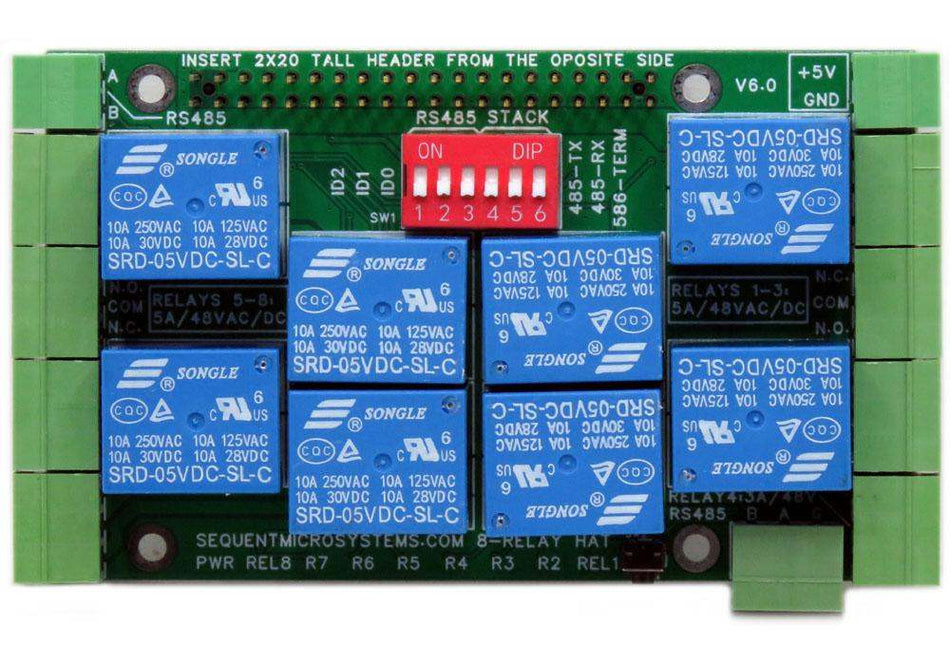 In stock
In stockEight Relays 4A/120V 8-Layer Stackable HAT for Raspberry Pi
Eight Relays 4A/120VAC, 24VDC N.O./N.C. contacts and LED indicators; RS485 Port. -
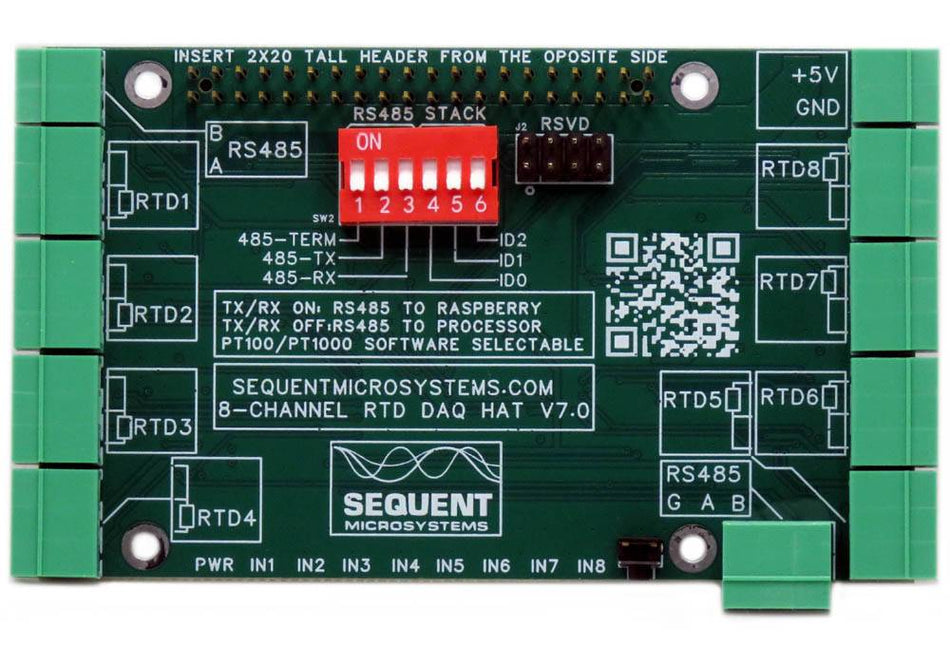 In stock
In stockRTD Data Acquisition 8-Layer Stackable HAT for Raspberry Pi
Eight Channel RTD Data Aquisition HAT; 0.01% accuracy through calibration; PT100/1000 Sensors; RS485/MODBUS, Watchdog. -
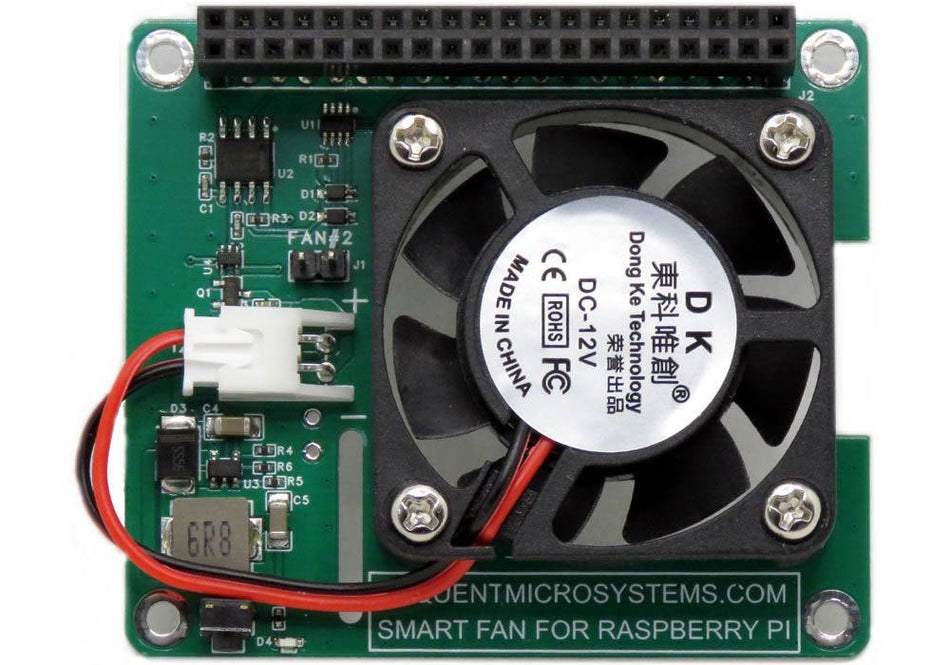 In stock
In stockSmart Fan HAT the Best Cooling Solution for Raspberry Pi
PWM controlled 40x40x10mm Fan keeps Raspberry Pi temperature constant; Stackable with any other HAT. -
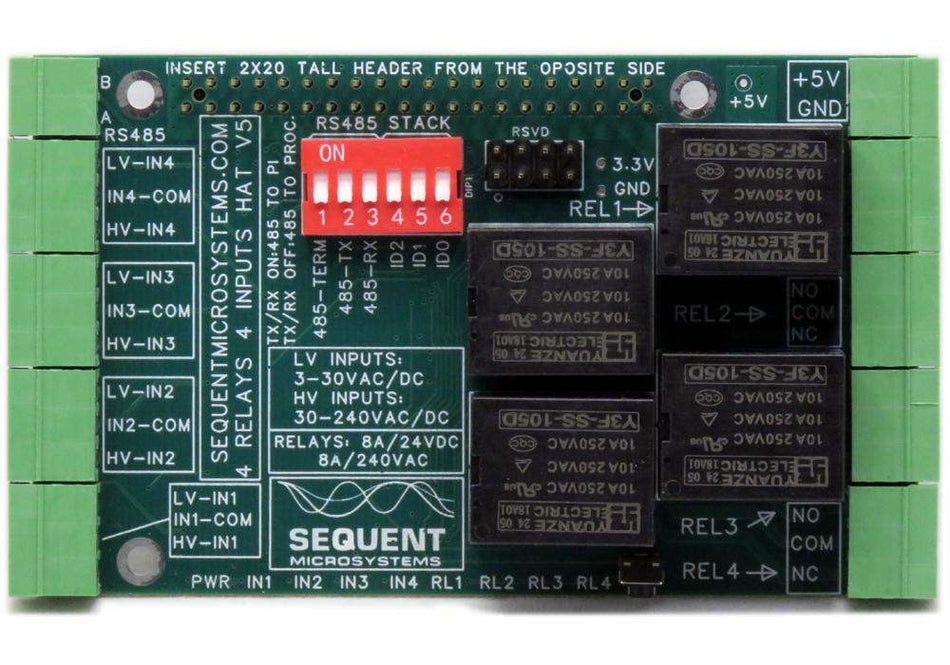 In stock
In stockFour Relays four HV Inputs 8-Layer Stackable HAT for Raspberry Pi
Four Relays 8A/240VAC; Four opto-isolated Inputs 3V-240V; RS485/MODBUS; Quadrature encoder, PPS counters, PWM inputs;










